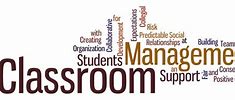Establishing a learning environment that’s conducive to learning should be at the top of the list of each teacher’s priorities. In order for students to grow, develop, and achieve to their fullest potential, it’s important to create a climate of cooperation, collaboration, trust, and mutual respect. While there are many ways to build a positive learning classroom, it hinges on helping students to develop interpersonal skills, responsibility, courtesy, and good citizenship. This is typically best accomplished through modeling good behaviors, providing multiple opportunities to practice those behaviors, and providing corrective support when needed.
However, there is another approach to classroom management that’s being offered to teachers across the nation. In a piece entitled Public Schools to Teachers: Run Your Class on Fear or Get Fired, author John Warner describes a classroom management philosophy called No Nonsense Nurturing.
What is No Nonsense Nurturing?
Essentially, No Nonsense Nurturing involves “coaches” sitting in the back of the classroom or nearby, constantly directing the classroom teacher how to interact with students using microphones and earpieces. Even worse is that teachers are required to bark orders at students using short, choppy commands, and no enthusiasm or encouragement from the teacher is permitted. Rather, it is simply a command-followed-by-compliance model. As stated in the article, the two goals of teachers adhering to the No Nonsense Nurturing approach are:
- I have to earn the respect of my students.
- I expect to have 100% compliance from my students 100% of the time.
Is This Really Nurturing?
After considering the premise behind the No Nonsense Nurturing approach, we have to ask: Can a teacher truly earn the respect of his or her students by demanding compliance? Or, is this sense or respect simply submission to authority?
There’s a big difference between the two.
The Center for Transformative Teacher Training, which apparently developed this classroom management approach, might be wise to dust off their dictionary and look up the meaning of “respect” again. If students are expected to comply with teacher commands 100% of the time, this is submission—not respect. And it’s sure not conducive to a positive learning environment. A far better approach would be to build a classroom environment where learners were empowered to think, to question, and to grow–where mutual respect abounds, and where compliance is reserved for annual regulatory reports.
The Real Key to a Successful Learning Environment
So then, how can teachers create safe, robust, stimulating places for students to learn and develop? We as a community of educators must ensure that appropriate information, support, guidance, and professional development are provided so they will have the tools they need to succeed. After all, a teacher’s success leads to student success. Furthermore, this support should start during their initial teacher preparation program and continue until the day they retire.
Preparing Future Teachers
Creating a positive, healthy learning environment that isn’t limited a comply or else model can’t be accomplished within a single college course or workshop. Many schools of education require future teachers to take a Classroom Management course that’s heavy on theory and light on practical applications. These future teachers are then placed in a classroom and frequently told that experience is the best teacher when it comes to managing a classroom effectively. Wrong! Preparing teacher candidates to understand and use the best tools for creating positive learning environments should be woven thoughtfully and purposefully throughout their program, across multiple courses and field experiences. They should receive extensive instruction in practical classroom applications coupled with theory. They should be given the gift of many classroom experiences where they are able to try out what they’ve learned while supported by a caring, experienced mentor teacher.
Supporting Teachers in the Classroom
Once they have been hired, school districts should be 100% committed to supporting each teacher’s success. That includes collaborative learning communities, high-quality professional development opportunities, and peer coaching. Each year of teaching comes with its own set of challenges, and school districts should have a solid support system in place that lies outside of required performance evaluations for continued employment.
The Role of School Leaders
In most instances, the building principal or assistant principal oversees a school’s overall classroom management approach and subsequent discipline policies. It’s the administrator’s role to lead faculty and staff in creating a positive learning environment. In order to provide this leadership, it’s important for administrative staff to be knowledgeable in (1) research-based best practices and (2) how to support teachers who may be struggling with classroom management. Far too often, this is minimally covered in educational leadership programs. Instead, a major focus is on curriculum, standardized testing, budgets, laws, and regulations. School leaders need to know how to create a positive, supportive environment for teachers so those teachers in turn can create a positive, supportive environment for their students.
Need Some Good Resources?
There are some wonderful, high-quality resources available to help future teachers, practicing teachers, and parents who are homeschooling their children. A few examples include:
- Marzano, Marzano, & Pickering (2003). Classroom Management That Works: Research-Based Strategies for Every Teacher.
- Nast (n.d.) Responsive Classroom.
- Smith, Fisher, & Frey (2015). Better Than Carrots or Sticks: Restorative Practices for Positive Classroom Management.
- Wong & Wong (2004). The First Days Of School: How To Be An Effective Teacher.
Through proper training and ongoing support, teachers can create powerful, robust learning environments where students are eager to come to school, and where they enthusiastically talk about their day at the dinner table. This culture of learning is not built on submission and compliance, but instead on respect, communication, consistency, and fairness.
Dr. Roberta Ross-Fisher is a national leader in quality assurance, educator preparation, and empowerment-based learning. She supports educational institutions and non-profit agencies in areas such as accreditation, competency-based education, and teacher/school leader prep programs design. Roberta also writes about academic excellence and can be contacted for consultations, webinars, and on-site workshops through her site (www.robertarossfisher.com).
###

